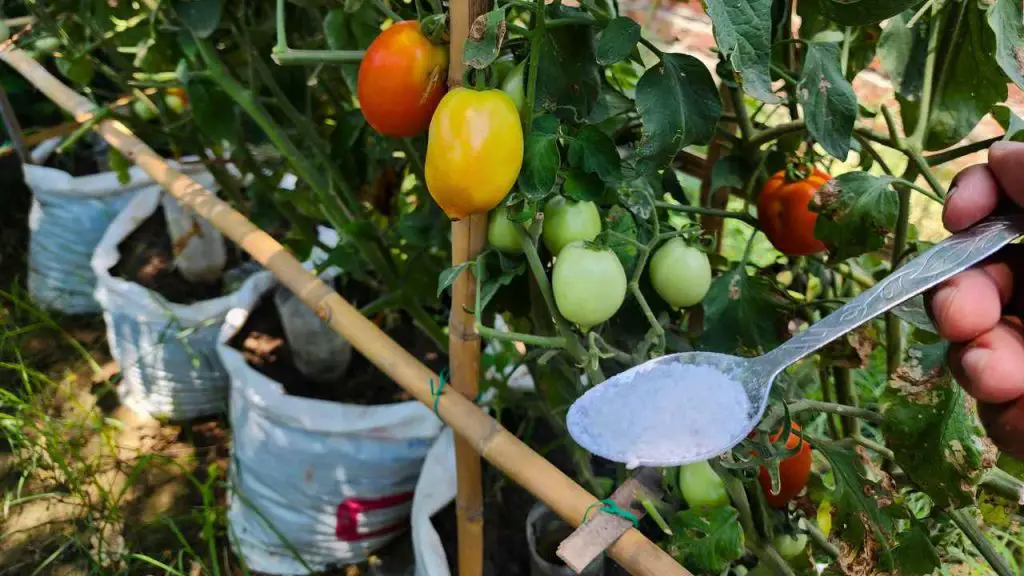Epsom salt, also known as magnesium sulphate, is a type of salt that is frequently utilised in gardening for a variety of purposes. Epsom salt may be of great benefit to your garden plants if it is added to the soil in the correct manner.
This is because it raises magnesium levels, which is one of the essential elements found in garden soil. In your yard or garden, employing Epsom salts can provide you with a number of benefits, including the following:

1. A Source of minerals:
Epsom salt is a source of magnesium and sulphur, both of which are necessary minerals for the development of plants. Magnesium is an essential component in the production of chlorophyll, which is required for the chemical reaction known as photosynthesis.
The formation of vitamins, enzymes, and amino acids all benefit from the presence of sulphur, which is also essential to overall plant health. The addition of Epsom salt to the soil can assist in the replenishment of these nutrients and support the development of more robust plant life.
2. Enhanced Nutrient Absorption:
Magnesium, which is found in Epsom salt, has the ability to boost the body’s ability to absorb other critical nutrients including nitrogen, phosphorus, and potassium.
It lends a hand in the process of transforming the sun’s rays into usable energy, which in turn enables plants to more effectively absorb and use the nutrients they take in.
3. Chlorophyll Production:
Epsom salt has been shown to improve chlorophyll production, which results in vegetation that is both greener and in better health. This can be especially advantageous for leafy vegetables like lettuce and spinach since it promotes robust leaf growth in the plant. Other examples are cabbage and kale.
5. Control of Pests
It has been proposed that using Epsom salt as a natural repellent for certain pests in the garden, such as slugs, is an effective method. Epsom salt can be used to create a barrier around plants or in affected regions, which may assist to ward off these pests and safeguard your plants.
4. Germination of Seeds:
Soaking seeds in a solution of Epsom salt before planting them has the potential to increase the number of seeds that germinate. The presence of magnesium is beneficial to the development and germination of seeds, creating an atmosphere in which it is easier for young plants to establish a foothold.
It is essential to emphasise that despite the fact that Epsom salt may be useful in certain circumstances, it must be applied with caution and restraint in order to achieve the desired effects.
Before adding any kind of amendments, it is usually a good idea to do a soil test in order to evaluate the existing nutrient levels in the soil.
Before applying Epsom salt or any other type of fertiliser, it is imperative to conduct study into the particular requirements that your plants have, as different kinds of plants have varied nutrient requirements.
The following is the proper approach to utilise epsom salt in your garden at all times:
Incorporating it into the soil before to planting or at any point during the growing season will assist to ensure that your plants receive a sufficient amount of magnesium and sulphur right from the beginning of their lives.
You can amend the soil with epsom salt at a rate of 1 tablespoon per 10 square feet or, if you garden in containers like I do, at a rate of 2 tablespoons per container.
During the growing season, you may give your plants a boost of magnesium and sulphur by combining it with water and spraying it on the leaves of the plants. This is an effective approach to do so.
Spraying the solution made from one tablespoon of Epsom salt and one gallon of water on the leaves of your plants once every two weeks is a good idea.
If you add some Epsom salt to your compost pile, it may assist to increase the amount of nutrients that are included in the compost. One tablespoon of Epsom salt can be added to each bucket of compost that is 5 gallons in volume. This can be done in the compost pile.
